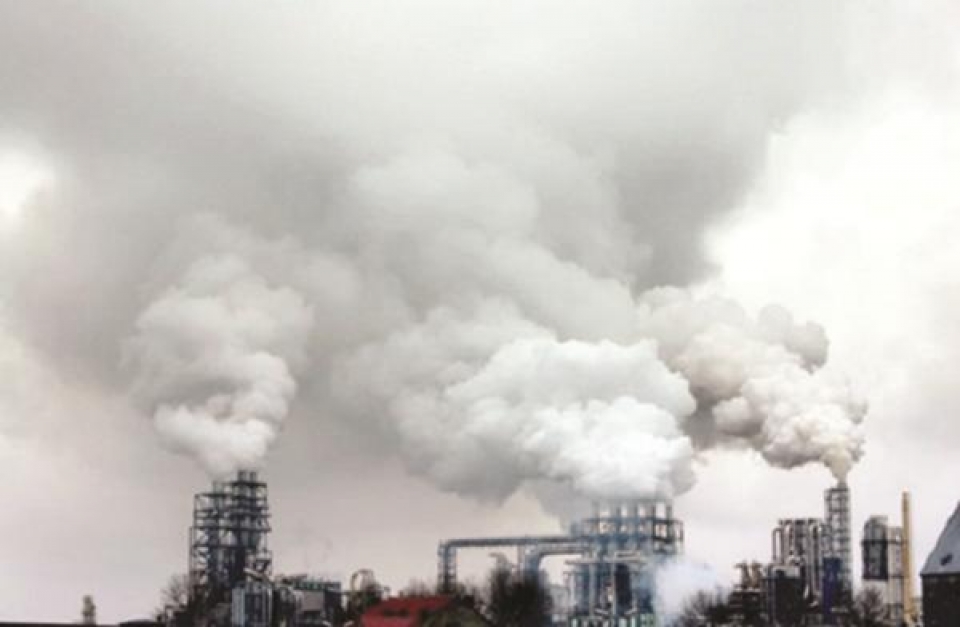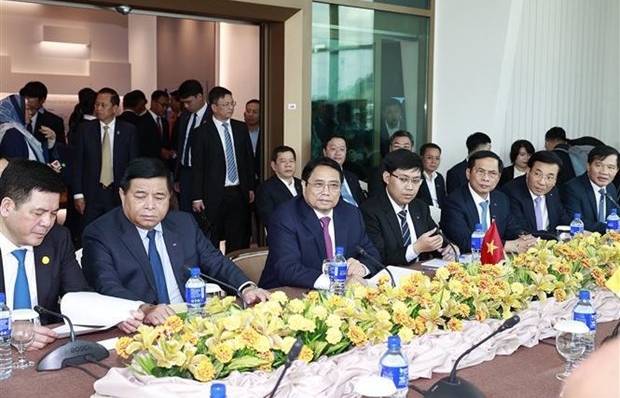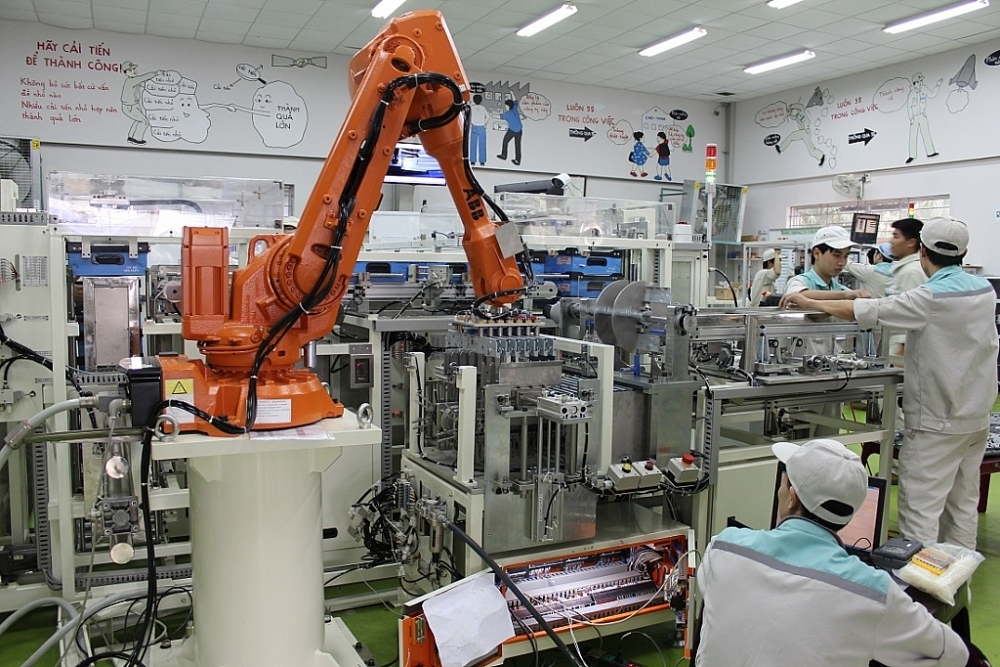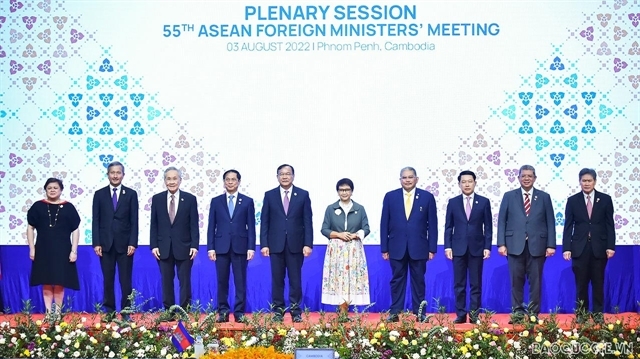The risk of pollution from coal-fired power
 |
The obsession
Like many other countries, Vietnam has fully exploited energy from hydropower. Therefore, coal-fired power, which is the energy source with the lowest cost besides hydropower, has been focused on to develop and grow since the year 2000, when the Pha Lai 2 Thermal Power Plant went into production.
According to the assessment of Mr. Truong Duy Nghia, Chairman of Vietnam Thermal Science and Technology Association, coal-fired power has many advantages, such as: low production cost (about 7 cents/kWh); the investment funds are not too high, lower than hydropower, solar power, wind power, nuclear power (about 1,500 USD/kWh); the ability to mobilize a large capacity, so the power output can be immense; not dependent upon location like hydropower; the construction time is not long (about 3 years).
However, after a period of development, coal-fired power has raised concerns about environmental pollution and negative impacts on the lives of people. To be noted, in early July 2015, in Vinh Tan 2 Thermal Power Plant (Binh Thuan), a technical problem occurred 3 times, leading to the dispersal of ash following smoke into the environment, creating problems for people. Recently, a Politburo member, Chairman of the Central Committee of Vietnam Fatherland Front, Mr. Nguyen Thien Nhan and the 14th National Assembly deputies of Tra Vinh province supervised the environment in Duyen Hai Thermal Power Plant (Tra Vinh) and received many comments that, since thís plant went into production, it had caused serious pollution, especially in exhaust fumes, soot, dust and slag. The waste water was also a problem, and killed fish and shrimp.
With a broader perspective, the general report on the impacts on the environment and society of coal and coal-fired powers plant in Vietnam from Vietnam Sustainable Energy Alliance (VSEA) shows that, coal-fired power plants, such as Hai Phong 1 and 2, Quang Ninh, Thai Binh 1 and 2, Mao Khe, Vinh Tan 2, Vung Ang 1 and 2, etc. are sources of air and water pollution. Currently, the community nearby those coal-fired power plants is faced with many concerns about environmental pollution and livelihood effect. "More than 20 coal-fired power plants in operation have shown existing threats to the environment, the health of the people and put pressure on the government," stated the report of VSEA.
There is no other choice
The pollution from coal-fired power plants has already existed, thus, several organizations have asked the Government to stop thermal power projects planned but not yet built, in order to consider between their effectiveness, benefits and their impacts, and costs for the whole society and economy. The Ministry of Industry and Trade had announced a list of power plants that are likely to cause environmental pollution.
However, stopping thermal power projects as well as replacing them by other energy sources is probably not possible. Mr. Hoang Quoc Vuong, Deputy Minister of Industry and Trade said that the development of coal-fired power plants is an important solution to meet the energy needs in the future, because of low production costs and abundant raw materials, the other energy sources such as renewable energy, thermal power, gas power do not have the ability to replace coal-fired power plants. "Not only Vietnam but also other countries in the world are adopting this technology.", said Mr. Vuong. This is further confirmed when Power Master Plan VII adjusted the figures given as: By 2020, the total capacity of coal-fired power will be about 26,000 MW, accounting for 49.3% of electricity production; by 2025, this figure will be 47,600 MW, accounting for 55% of electricity production; and will reach 55,300 MW by 2030 and accounting for 53.2% of electricity production.
In addition to the energy from coal-fired power, Mr. Nguyen Manh Hien, former General Director of the Institute of Energy, said renewable energy sources can only be considered as the complementary sources that cannot replace coal-fired power due to its low power factor (only 20-30%), higher investment cost, and highly dependent on natural conditions, such as location and time, so it cannot be adjusted as required. Therefore, "reducing the rate of coal-fired power is not easy, because it is difficult to find alternative sources while most medium and large hydropower projects are exploited, the natural gas resources are running out and liquefied petroleum gas import prospects will take place after 2025", stressed Mr. Hien.
The need to focus on pollution treatment
In the above analysis, it can be seen that the development of coal power is an indispensable step. "We still have to invest in the construction and development of coal-fired power plants until 2030 at least, when the development of nuclear power and renewable energy is at a high level, then we can reduce the proportion of coal-fired power", recognized Mr. Phuong Hoang Kim, Deputy Director General of the General Department of Energy (MOIT). Mr. Vuong also acknowledged the shortcomings of this technology that it creates many types of waste. However, with the ability and the attention of the relevant authorities, this is a problem that can be solved, because the cost of overcoming is not higher compared to other technologies. On the other hand, if the solid wastes are handled, they can become a resource for the development of other fuels.
The Adjusted Power Master Plan VII has highlighted environmental protection measures, which require to use the waste ash of coal-fired power plants in the production of building materials and other industries to reduce the waste dump area for thermal power plant projects in accordance with regulations, as well as manage strictly the power generation technology in terms of the environment. When building coal-fired power plants, currently there are 3 required for investors, i.e. maximum treating of toxic emissions of NOx, SOx and installing electrostatic precipitators to prevent impurities from being excreted into the environment; building suitable coal ports and conveyor belts to avoid spillage of coal; treating ash and slag.
Mr. Kim said that the coal-fired power plants in Vietnam have applied advanced technologies such as CO2, SO2, NOx emissions and dust are processed and captured in the factory, ensuring the emission concentrations remain lower than the limit before entering the tubes and escaping into the environment, so the environmental pollution has been limited and overcome. Besides, coal-fired power production technology of Vietnam is modern technology, at the world-class level. Specifically, steam parameters: close-critical and super-critical, performance is in the best group of the world, the unit capacity is also one of the highest in the world; and good safety and reliability. "With this modern technology, the development of coal-fired power is not a concern as public opinion mentioned in recent years," said Mr. Kim.
Speaking further on the issue of handling ash from coal-fired power plants, Mr. Vuong said, in the coming time, the Ministry of Industry and Trade will coordinate with the Ministry of Construction to build the legal framework on technology and environment for coal-fired power plants. The ministries will develop the mechanisms and policies on the treatment and efficient use of waste ash and slag to become raw materials, issue technical standards when using ash, slag, implement leveling, encourage businesses to reduce and abolish the production of bricks, then the amount of ash and slag can be fully handled.
| "The general trend is that countries use coal-fired power to meet the electricity needs of economic development after fully exploiting hydroelectric power resources. This is a strong period of economic development, when electricity demand is high. The countries just think to develop other forms of energy, such as renewable power and begin to gradually restrain coal-fired power development, after having become rich." – Mr. Nguyen Manh Hien, former Director General of the Institute of Energy. |
| The Adusted Power Master Plan VII has eliminated many thermal power projects, such as Uong Bi III, Yen Huong, Bac Giang, Kien Luong. At the same time, the Government also has required the development of power plants at an appropriate rate, in line with ability to supply and distribution of fuel. This shows the determination of the Government in the implementation of commitments on reducing greenhouse gas emissions in the 21st Conference of the UN Framework Convention on Climate Change in Paris in 2015- COP21 Conference (which will cut emissions volume by 8% by 2030 and by 25% if there is international support). |
Related News

PM holds roundtable discussion with Brunei energy, oil and gas firms
17:55 | 11/02/2023 Headlines

Saving energy for sustainable business development
10:42 | 13/08/2022 Import-Export

ASEAN foreign ministers highlight cooperation in health, maritime and energy
15:30 | 04/08/2022 Headlines

Synchronous solutions in energy conversion
09:16 | 09/07/2022 Import-Export
Latest News

High-quality science, technology human resources key to sustainable growth
20:09 | 18/05/2024 Headlines

Vietnam, France look to boost economic partnership
20:06 | 18/05/2024 Headlines

Opportunity for growth and investment links between Vietnam and the US
09:57 | 18/05/2024 Headlines

Positive economic transformations in four months
16:11 | 15/05/2024 Headlines
More News

Vietnam is ready to welcome a new wave of investment in the semiconductor industry
16:08 | 15/05/2024 Headlines

Việt Nam, Japan sign MoC on forestry co-operation
14:25 | 15/05/2024 Headlines

Mounting inflationary pressure requires Government’s flexible moves
14:20 | 15/05/2024 Headlines

Business conditions numerous and cumbersome: CIEM
14:46 | 14/05/2024 Headlines

Prime Minister chairs seminar with Chinese businesses
14:38 | 14/05/2024 Headlines

Vietnam charts vision for sustainable, modern fisheries
19:26 | 13/05/2024 Headlines

Vietnam becomes fastest growing digital economy in ASEAN: HSBC
17:02 | 13/05/2024 Headlines

Maintain fiscal policy to "open the way" for the economy in 2024
13:31 | 13/05/2024 Headlines

Key economic pillars show positive growth
17:54 | 12/05/2024 Headlines
Your care

High-quality science, technology human resources key to sustainable growth
20:09 | 18/05/2024 Headlines

Vietnam, France look to boost economic partnership
20:06 | 18/05/2024 Headlines

Opportunity for growth and investment links between Vietnam and the US
09:57 | 18/05/2024 Headlines

Positive economic transformations in four months
16:11 | 15/05/2024 Headlines

Vietnam is ready to welcome a new wave of investment in the semiconductor industry
16:08 | 15/05/2024 Headlines



